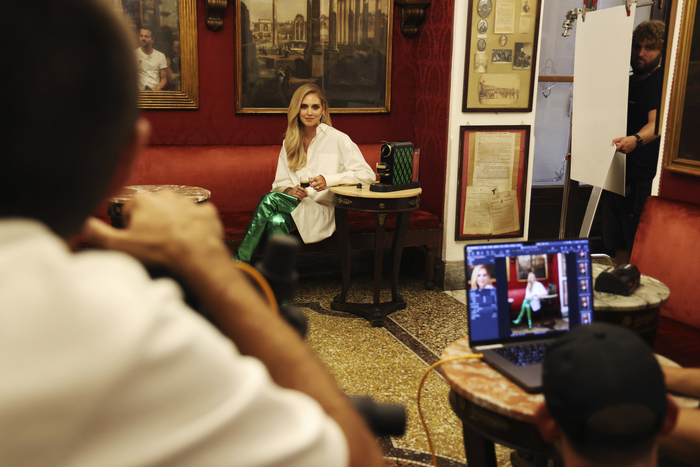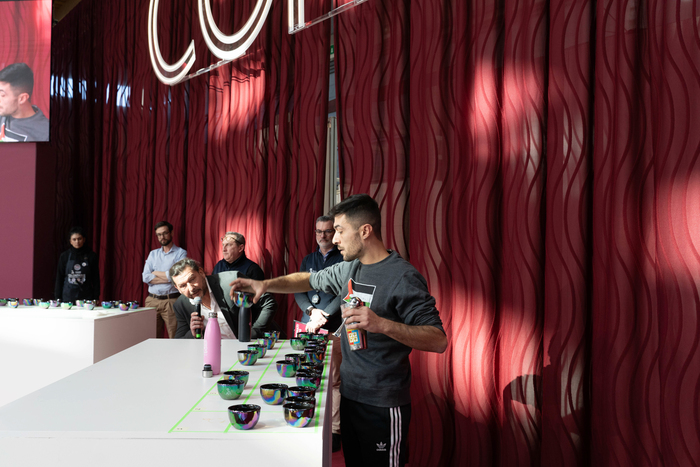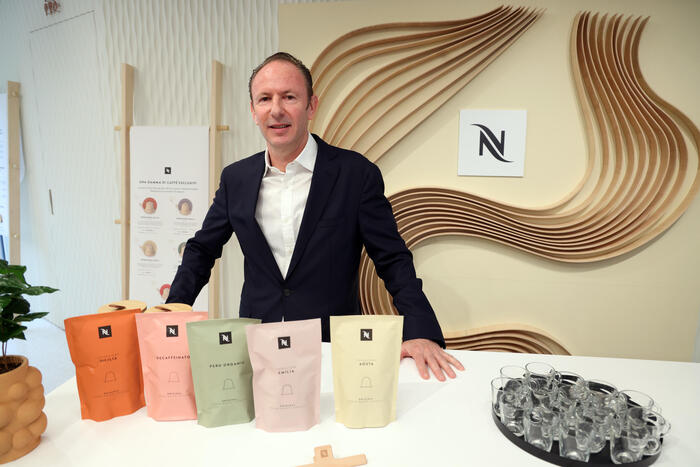The coffee tradition in Italy is so strong that it is believed to be something typical of our country.
Coffee is an integral part of Italian culture, just think that the daily routine of most of us begins with a cup of coffee, a real ritual which then becomes a moment of socializing at the bar in the middle of the morning.
According to YouGov 2021 data, Italian consumers drink coffee for various reasons: 68% for a matter of taste and aroma, 58% to take a break;
3.5 people out of 10 rely on a drink to stay awake and as many as 25% of those interviewed consider coffee as an element of socialisation.
It is therefore not surprising that the data shows that 80% of adult Italians regularly drink coffee, while only 5% never drink it.
In Italy we think of coffee as our distinctive element.
The origins of coffee in Europe are Italian
, because the first appearance of coffee in Europe dates back to
1570 and concerns the Venice lagoon
.
Specifically, it seems that it was the doctor of the consul of Venice in Egypt who imported the coffee who, on his return to the Italian peninsula, brought some sacks.
Since then, in Venice coffee began to be known among the noblest - because of its high price - and in the medical field, for its numerous "beneficial" properties.
However, it soon spread to the people and
the first coffee shops were created, as in the East.
The first "coffee shop", the Florian coffee,
it was built right in Venice, under the portico overlooking the spectacular Piazza San Marco.
In a short time this found itself colliding with the competition and it was precisely for this reason that, in 1716,
it published a brochure for advertising purposes in which the benefits of coffee were exalted
.
Only a few decades later
in Venice there were more than 200 cafes
and, from Venice, coffee spread just as quickly to other Italian cities, including Padua, Turin, Rome, Naples.
The cafeterias progressively acquired greater prestige because they were usually frequented by people of prestige and cultural depth, including writers, philosophers and politicians who gathered around a table, with a cup of Italian coffee in hand, to discuss, write and exchange opinions.
So thanks to the shops, coffee assumed the social importance that is attributed to it today in Italy: a drink that symbolizes conversation between friends and relatives, an opportunity to exchange ideas and moments of light-heartedness.
Among the many ancient historic cafés,
the Gran Caffè Quadri
in 18th century Venice, which can boast among its clients Stendhal, Lord Byron, Alexandre Dumas, Wagner, Marcel Proust and Woody Allen.
And again in Venice the Torrefazione Marchi, frequented by the Venetian futurists, by Depero, Mastroianni, Alberto Sordi, Vittorio De Sica and many others.
The Veneto hosts another illustrious meeting place, namely the Caffè Pedrocchi in Padua, a local symbol of the city since its inauguration in 1831.
The Antico Caffè Greco in Rome
in Via Condotti, founded in 1760 at whose tables have sat Giacomo Leopardi, Goethe, Gogol, Henry James, Casanova, Canova, Keats, Andersen, Thomas Mann, Rossini, Liszt, Silvio Pellico, Shelley, Schopenhauer, Mark Twain, Wagner, Joyce, Orson Welles, Ibsen.
In Naples there is the historic Gran Caffè Gambrinus since 1860 overlooking Piazza Plebiscito, which blossomed in the Belle Époque period and even attracted Oscar Wilde, Gabriele D'Annunzio and the Empress Sissi.
In Trieste, the Caffè Tommaseo since 1830, the oldest in the city, named in honor of the Dalmatian writer.
And then the Caffè degli Specchi of 1839 and
the Caffè San Marco
, opened in 1914 as a meeting place for irredentists, rebuilt in the 1920s and saw Saba and Svevo among the diners.
In Turin since 1763
the Caffè Al Bicerin
frequented by Alexandre Dumas and Camillo Benso Conte di Cavour and still the nineteenth-century Caffè Mulassano, where the tramezzino was born in 1926, the Caffè Baratti e Milano in Piazza Castello, bound by cultural heritage, and the Caffè Fiorio, inaugurated in 1780, was a meeting place for nobles of the time and particularly loved by Nietzsche.
Also in Piedmont, the Caffè Arione in Cuneo is an obligatory stop. Opened in 1923, it is the place to which we owe the invention of the Cuneesi al rum.
In Florence, one cannot ignore
the Caffè Le Giubbe Rosse
, a timeless crossroads of artists and men of letters, founded in 1897.
The real transformation has taken place in Italy over the last 150 years, with the introduction of
the espresso coffee machine, patented in Italy at the end of the 1800s
.
Espresso is in fact one of the many methods of preparing coffee but certainly the most widespread and appreciated in our country, and sees its beginnings in 1884 when the owner of two historic premises in Turin, Angelo Morimondo, presented a machine of his own invention , to meet the needs of its customers with a quick method of preparing coffee, known as "espresso".
Italy is therefore the spiritual homeland of espresso
or, where the very definition of the drink was born, initially characterized by a tradition of slow and dark roasting and, often, with a high content of Robusta.
At the time, toasting machines, such as pizza ovens, were in fact often wood-fired.
Roasting was inevitably slower and the choice of coffees used in the blends was largely dictated by what was more easily available, i.e.
Robustas from West Africa, Arabicas from East Africa and, of course, the loved Brazil.
Around the mid-twentieth century, coffee in Italy was therefore a dark and intensely toasted cup inspired by the atmosphere of the traditional bars of the beginning of the century in our country, where coffee was consumed standing up.
Then, with the economic boom and a world more connected and open to new possibilities, roasters slowly moved away from the traditional path of dense blends of dark roasted Robusta, and tried to innovate with new lively proposals, in which new blends based on Arabica have joined the more traditional proposals, evolving up to the proposal of
specialty coffees
, which explores and promotes new flavors with more pronounced acidity.
Specialty coffees, a trend that for some years has been a bridge between the tradition of espresso and the 'new wave' of artisan coffee with new and original blends with a particular gustatory value.
At Pitti Taste, the Florence show in February,
Ditta Artigianale
, the first Italian line of coffee shops dedicated to the conscious consumption of coffee and micro-roasteries, will in fact bring a single-origin coffee from 'Guinness', the
"Candy Geisha" to the Pitti Immagine show of taste
, a variety from Colombia, revered and appreciated for its floral and fruity notes, which costs more than 100 euros per kilo.
The reason for such a high price mainly lies in the complex manufacturing process, which in addition to being very detailed is divided into 3 phases: initially the berries are cleaned with ozone, to reduce the unwanted microbiological load, then they are introduced into stainless steel fermenters with the addition of CO2, in order to prevent the oxidation of the compounds present in the pulp, finally the beans are washed with the thermal shock technique which allows the fermentation compounds to be rapidly fixed.
Another brand that has enriched the collection over the years by bringing a new coffee culture is
Nespresso
.
Now, with an 'inverse' operation, it enriches its range of coffees totally dedicated to Italian traditions and flavours, Italian
Inspiration
, with a coffee that brings back the taste of tradition.
Milano Intenso
, the new coffee that takes inspiration from the Italian history of coffee and its consumption traditions, is the emblem: a coffee with a strong taste with notes of toasted cereals and cocoa, which find their balance with a note of jam more spicy fruit and hints, which make this blend deliciously complex. which tells the elegance, history and experience of coffee in Italy.
The coffee and the limited edition collection of machines and accessories were created in collaboration with
Chiara Ferragni
.
Milano Intenso, limited edition 2023, is composed mostly of Latin American Arabicas, whose medium-dark roast pays homage to the coffee heritage of this city.
With an all-Italian look and designed by Chiara Ferragni, the limited edition collection recalls Villa Necchi Campiglio and Palazzo Montedoria in Milan, the main sources of inspiration for design;
in particular, the diamond motif within the Villa inspired the diamond aesthetic of and the green and gold tones of both buildings are featured throughout the collection.


/cloudfront-eu-central-1.images.arcpublishing.com/prisa/3JJD4TKINZEPFLXDOCJAQFGKXE.jpg)





